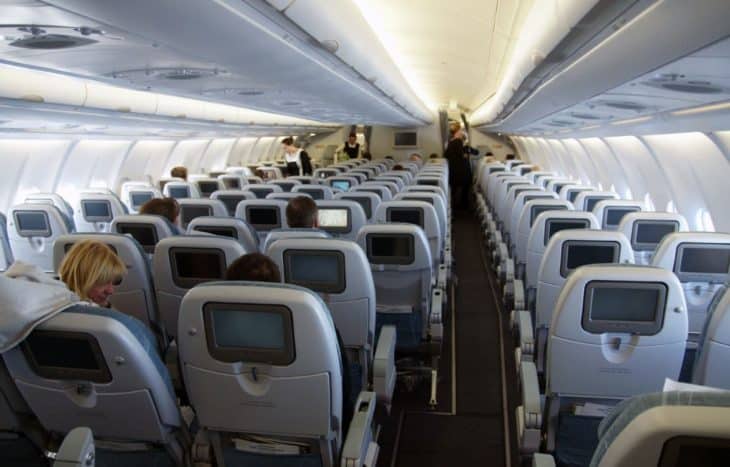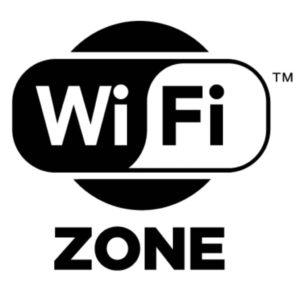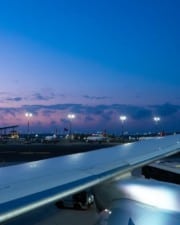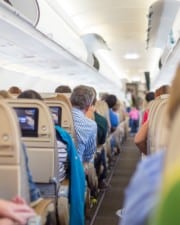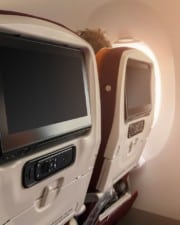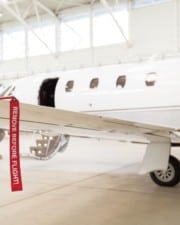If you’re flying on a plane for business purposes, you likely expect the airline you’re flying with to offer you WiFi while you’re in the air and most airlines can accommodate you these days. But have you ever wondered where their WiFi comes from and how they are able to make it work so high up in the sky? It really isn’t a mystery but its explanation does offer a few very interesting facts.
Table of Contents
How Do Airplanes Get WiFi?
To provide WiFi in the air, airlines have to have access to land-based cell towers or satellite-based services. There has to be some way for the antennas and satellites to hit the cell towers or corresponding satellites in order for the WiFi to work properly. Different WiFi services offer different speeds and clarity but the service is improving with each passing day, fortunately.
The Three Main Types of In-Flight WiFi
Just like WiFi in other places – such as your home or workplace – there are many ways to receive WiFi capability on an airplane. In general, there has to be a way for the plane itself to “communicate” with the towers on the land, which isn’t as complex as you might think. In fact, thanks to modern technology the process is easier than most people realize, which is why it is such a commonplace practice anymore.
There are three main ways that you can get WiFi when you’re 30,000 feet in the air and they include the following:
- ATG (air-to-ground): With ATG WiFi, two antennas are placed on the belly of the plane so that signals from land-based cell towers can be picked up. The flight attendant turns on the ATG switch; voila, you now have WiFi. This method is used mostly for domestic travel over land and its approximate speed is only around three Mbps, which is enough for reading emails and checking Facebook. The Mbps speed is expected to increase with more advances in the future. As the plane flies over different areas, different towers are picked up and allow you to utilize their services.
- Ku-Band: This is a satellite-based service that can provide service even over the ocean and when you’re flying out of the range of land-based cell towers. There is a large saucer-shaped antenna placed on top of the airplane and it can be directed towards the transmitting satellite while the plane is in the air. It works similar to a rooftop TV dish. It is an improvement over the ATG system because its speed can get up to 30 to 40 Mbps. It is still not good enough for tasks such as streaming movies off of Netflix, for example, but you can still view most websites and maybe even conduct a Google Fi call.
- Ka-Band: Another satellite-based WiFi service, Ka-Band is used mostly for military communications and offers some of the fastest WiFi services available today. It promises speeds up to 70 Mbps and allows you to stream videos, upload photographs, and peruse various social media sites. As of now, there is only one Ka-Band satellite in the U.S. but other companies are planning products that will be available in Canada and parts of Europe very soon.
In addition, there is also a 12 Mbps WiFi service called Exede that runs off the same satellite as the Ka-Band system. Used mostly by JetBlue Airlines, it allows passengers to enjoy free WiFi the entire time that they’re in the air. For $9 per hour, JetBlue also offers a faster, more advanced WiFi service called Fly-Fi+.
What Does a Plane Have to Do to Offer WiFi to its Passengers?
There is a lot of interior equipment required to be on an airplane in order for its passengers to have WiFi capabilities. These include black boxes (which are NOT flight recorders) that line one side of the plane and are set above the windows. These are your in-flight WiFi access points. They are known as wireless access points, or WAPs, and they are connected by a QuadRax cable.
As you might expect, there are some limitations in WiFi capabilities when you’re tens of thousands of feet in the air. First of all, aircraft are usually kept “auto-throttled,” which means that all data is evenly distributed among all of the users on the plane. The fewer the users, the faster the WiFi service will be.
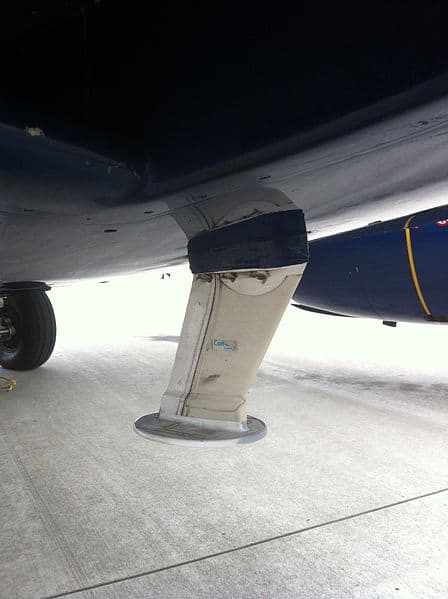
There are also some limitations among the different types of WiFi services. The ATG system, for example, has antennas that can only face the front and rear of the plane and the Ku-Band satellite is only able to connect to one satellite at a time. This means that both of these systems can cause disruptions in the service between the various satellites and towers.
On-the-ground technology also has some limitations. Some remote places that contain a lot of farmland or wide stretches of land have a limited number of cell phone towers, meaning that the service can be disrupted from time to time. In other places — think the North and South Poles — cell towers aren’t even available, which means that you won’t get any service at all.
Fortunately, flight attendants generally know where poor service will be and they can warn the passengers ahead of time that they’ll be losing WiFi service, if only temporarily. WiFi systems can also break and malfunction, causing even more problems for passengers who want to access the Internet or check their email while they’re in the air.
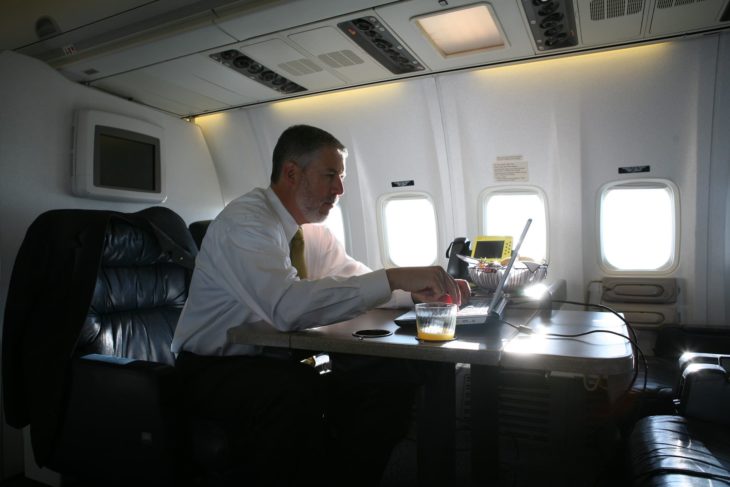
Of course, the reason why this is all so important isn’t just so passengers can check their email while in the air. WiFi capability is important for watching in-flight movies and talking on the airplane’s telephones as well. Since around the year 2000, airline passengers have had this capability and love it, which is why so many advances are being made year after year when it comes to getting WiFi on airplanes.
In addition, most major airlines now offer some type of WiFi capability to their passengers, including Delta, Southwest, JetBlue, Virgin America, Alaska Airlines, American, United, US Airways, and Air Canada, to name a few. This means that the next time you fly, be it for business or personal reasons, you’ll likely be able to rely on the aircraft’s WiFi services to enjoy a variety of in-flight conveniences.
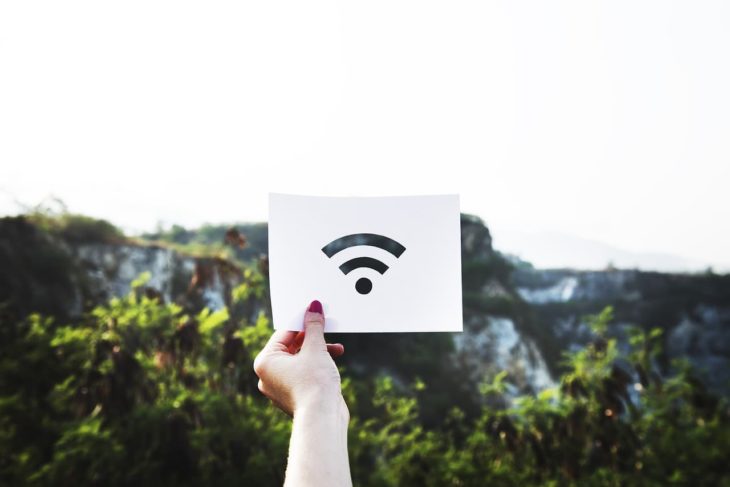
Does the Service Come Free?
If you’re wondering if the airline you’re about to use offers free WiFi, there is an easy way to find out. Most airlines offer some type of WiFi capability, but many of them offer it only on certain models of their airplanes. You can easily visit their website or give them a call to find out for certain, and the same goes for finding out whether the WiFi is free.
So far, only eight airlines offer WiFi services that are free, and they are Emirates, JetBlue, Air China, Norwegian, Nok Air, Hong Kong Airlines, Turkish Airlines, and Philippines Airlines, even though that number is expected to increase in the future due to increased customer demand.
Fortunately, the airlines that charge for their WiFi don’t charge very much, and you can usually pay for it in advance through their website or wait until you get on the plane. The airline representatives can answer any questions you have regarding their plane and WiFi capability, so never hesitate to ask one of them if this is something you’re interested in.
Related Posts
